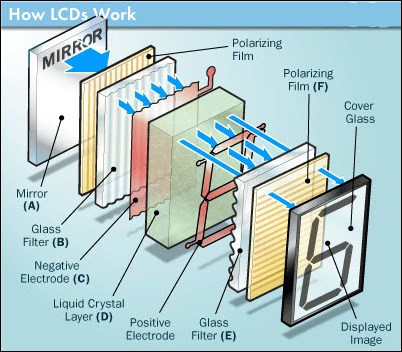Smartphones are a necessity these days. They allow you to connect to the online world. Keep up to date on social media. Follow the latest news. And, even watch your favorite TV shows and keep your music library up to date. All this is possible because smartphones are powerful, and their screens are vivid and responsive. However, in the display world, there are different types of screens, and, each screen has its benefits and drawbacks. So, What’s The Difference Between Amoled Vs Oled Vs LCD? The three most used display types.
Liquid Crystal Display | LCD Screens
Liquid Crystal Display or LCD get illuminated by a fluorescent backlight that strikes liquid crystals. Within LCDs, there are two sub-categories, TFT LCD and IPS LCD. The TFT display is attractive however they consume a lot of battery life. On the other hand, IPS LCD provides battery performance and battery management. However, these are found on high-end mobile devices.
The main advantages here are that these display types offer better quality under direct sunlight and the battery consumption is rather moderate. Although, the picture quality is relatively lower and there exists a lack of contrast.
A liquid-crystal display (LCD) is a flat-panel display or other electronically modulated optical device that uses the light-modulating properties of liquid crystals. Liquid crystals do not emit light directly, instead using a backlight or reflector to produce images in color or monochrome. Wikipedia
Organic Light Emitting Diode | OLED Screen
Organic Light Emitting Diode or OLED is a thin-film display technology that contains OLED, an organic material which emits light when current passes through it. OLEDs have much better contrasts and consume less energy when displaying darker colors since OLEDs are always off unless electrified individually. Just like LCDs, there are two main types of OLED, PMOLED, and AMOLED. What is the difference between PMOLED, AMOLED, and OLED?
PMOLED stands for Passive Matrix Organic Light Emitting Diode. These screens have a simple control scheme. The control being sequential. These types of displays you typically find on smaller devices. They do not offer much regarding longevity. On the other hand, Active Matrix Organic Light Emitting Diode or AMOLED are TFT type screens that have a storage capacitor hence allow them to support larger devices.
Amoled displays are thinner and more flexible than LCD displays. They have a faster refresh rate and no restriction on the size of the screen. Furthermore, AMOLED displays have a higher contrast ratio and consume less power when displaying darker colors.
However, because they have no backlight, they are not as good when under direct sunlight. Additionally, these types of displays consume more energy when displaying brighter colors. Lastly, because they use organic material in the construction of these displays, their life span can be shorter.
AMOLED vs. Oled vs. LCD | What’s The Difference? Which Is Best?
LCDs are the long runners. In that, they were first on the scene. However, AMOLED displays are the current hype. And, while AMOLED is a type of OLED display, they are an improvement. Hence, AMOLED is the better display right now. As for the three-way battle, AMOLED displays are the best among the three screens. AMOLED provides better picture quality, faster refresh rates, higher contrast, better brightness, higher resolution, and better viewing angles. However, they are not good under direct sunlight, which, by the way, has improved with the latest Super AMOLED display.
